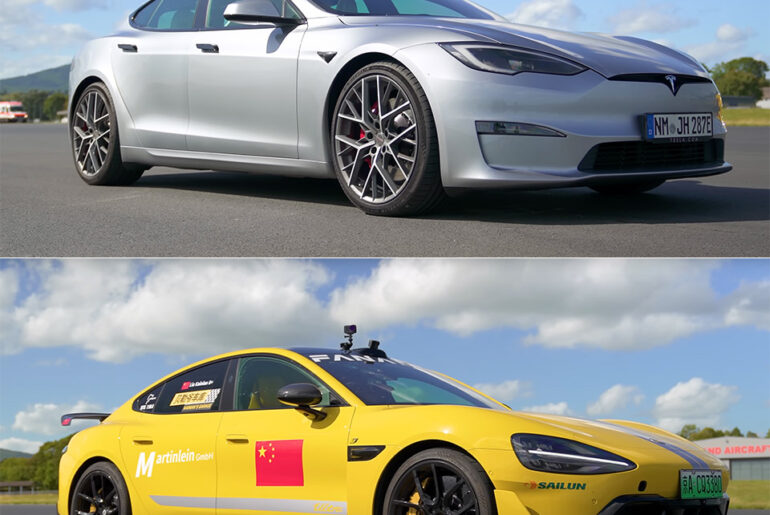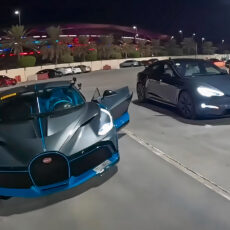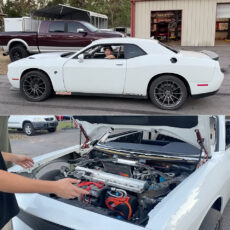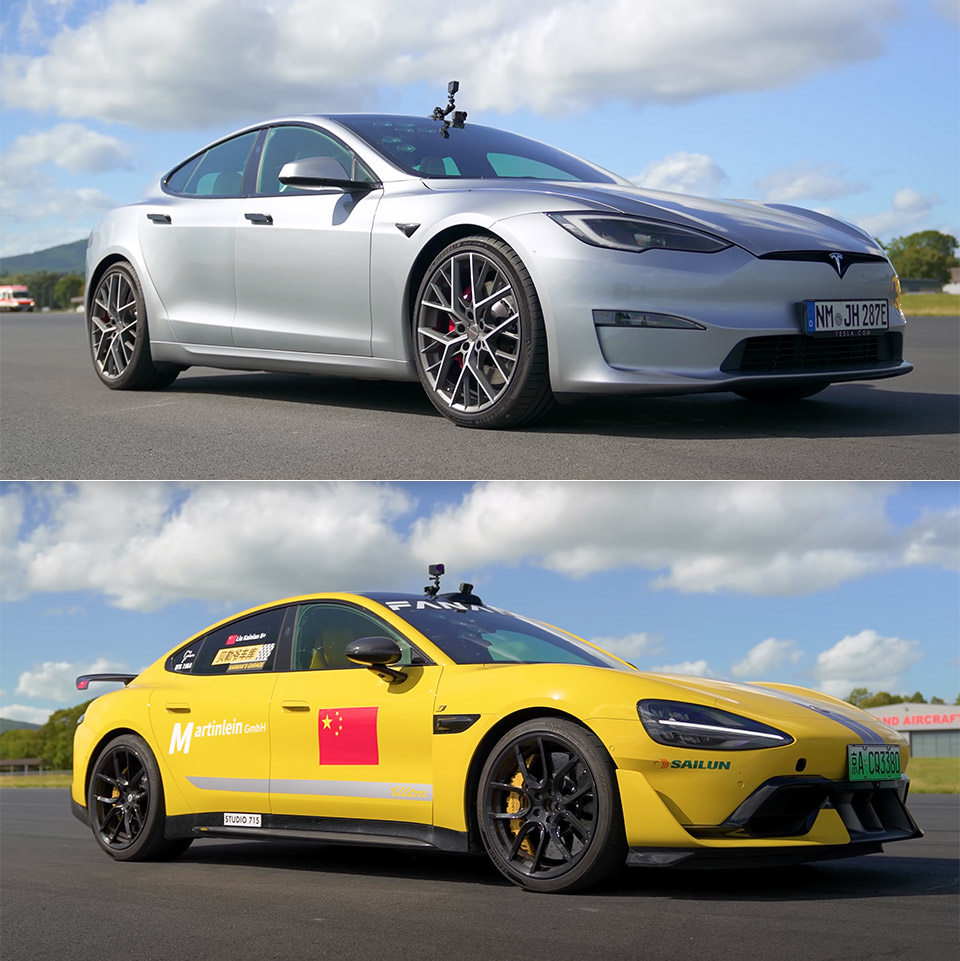
Mat Watkins lined up his Tesla Model S Plaid at the start of Carwow’s drag strip, the air thick with the smell of fresh asphalt and high stakes. Across from him stood the Xiaomi SU7 Ultra, a four-door from the Chinese electronics giant that had quietly entered the electric car market.
The Tesla’s three motors produce 1,020 horsepower and 1,420 Nm of torque, and weighs 2,190kg. Mat was behind the wheel and knew every trick – how the Plaid lunges forward with a rush that pins you back, accelerating from 0-60mph in under two seconds on a good day. A Xiaomi engineer was in the SU7 Ultra, and he was driving a car with 1,526 horsepower from its own tri-motor system. It weighs in at 2,360kg, but its power alone suggested a new kind of anger. Xiaomi’s engineers had designed it to do 0-100km/h in 1.98 seconds, according to independent testing before the competition.
- BUILD 2 SUPERCARS – Young racing enthusiasts ages 10 years old and up can construct the LEGO Speed Champions Lamborghini Revuelto & Huracán STO...
- AUTHENTIC LAMBORGHINI DETAILS – Kids can recreate signature design elements including aggressive air intakes, aerodynamic wings, and iconic Y-shaped...
- 2 DRIVER MINIFIGURES – Each buildable Lamborghini model car comes with a driver minifigure wearing a dedicated outfit and helmet for thrilling race...
The standing quarter-mile came first, and when the lights went green the Tesla was ahead by a few yards, its lighter body giving it a split second advantage. Tires howled as both cars fought for grip, the Plaid’s all-season tires digging in with ease. But by 60 feet the Xiaomi’s massive torque took over. It pulled ahead, and pulled away with precision, leaving the Tesla behind. Official times appeared on screen: the SU7 Ultra finished in 9.25 seconds at 155mph, the Model S Plaid 9.42 seconds at 151mph.
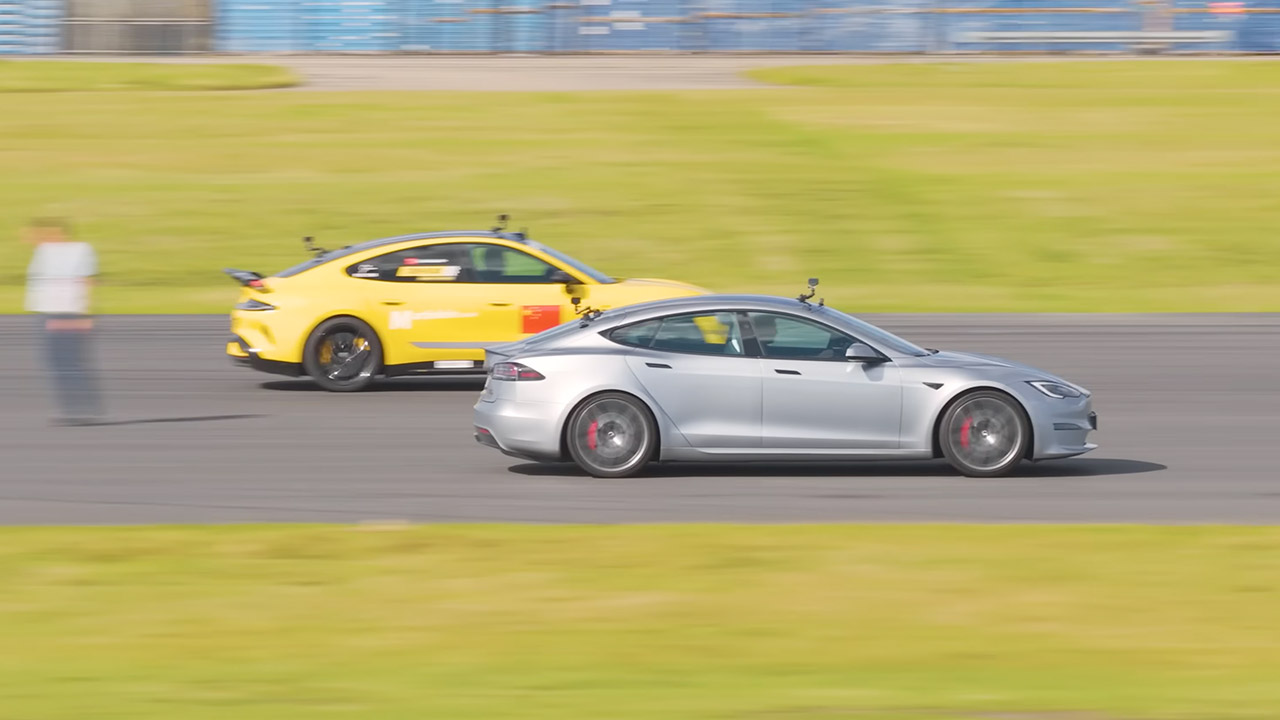
Not satisfied with one run, the team reset for a rolling race at 30mph, simulating highway pulls where real-world drivers often test the limits. The Tesla’s software was brilliant here, with torque vectoring that changed on the fly to keep power balanced between axles. But the margin quickly closed; the Xiaomi, with carbon-fiber reinforcements in the chassis, was like a shadow. By the end the SU7 had caught up, finishing the quarter in 8.97 seconds to the Plaid’s 9.12, at 157mph. Mat got out and shook his head, the Xiaomi’s mid-range punch felt relentless, as if it found more power when it needed it.
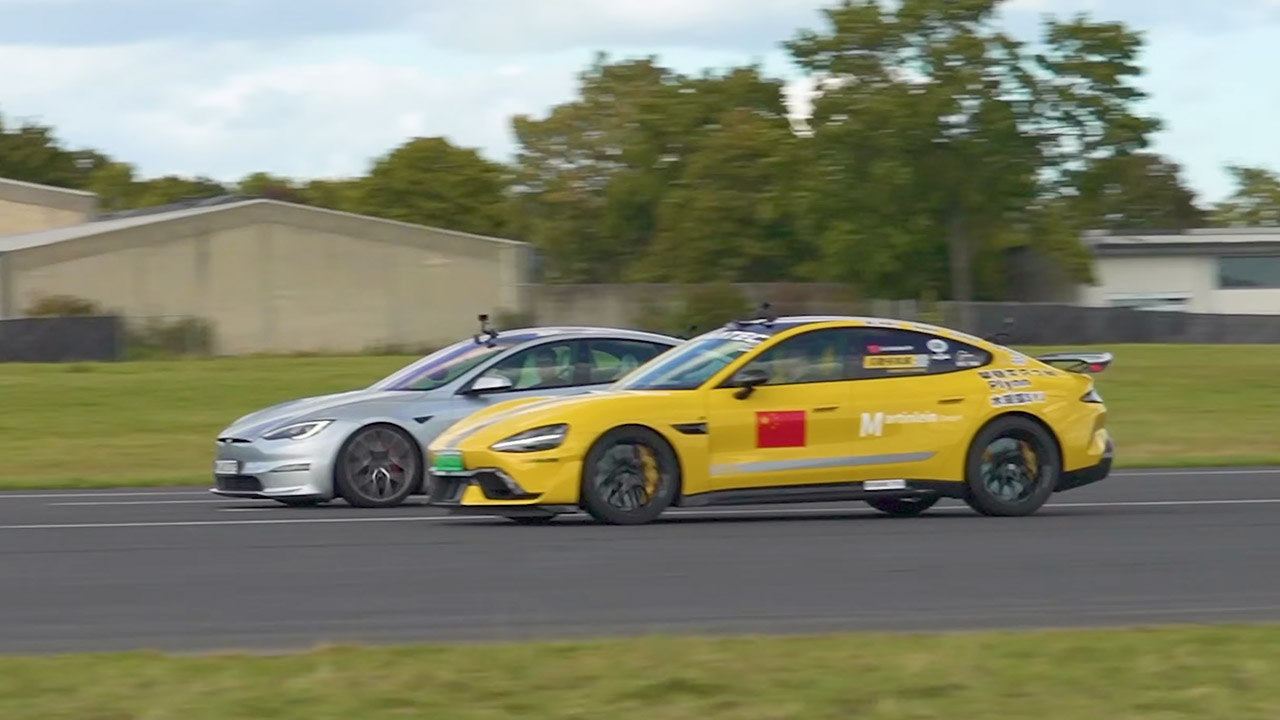
Braking came next, a reminder that speed means nothing without control. From 100mph the Tesla stopped in 94 feet, the regen merging perfectly with the binders for a smooth stop. The Xiaomi stopped in 98 feet, a small concession given its extra weight, but the engineer said the pedal felt solid, no dive or wander.
Xiaomi, drawing on its smartphone heritage, designed the SU7 Ultra with batteries that can sustain peak power for longer than most competitors, so it doesn’t fade like some high-power EVs do after many launches. Priced around $73,000 in its home market, it undercuts the Plaid’s $95,000 price tag and has a 7:04 Nürburgring lap time – 21 seconds faster than the Tesla’s best.

